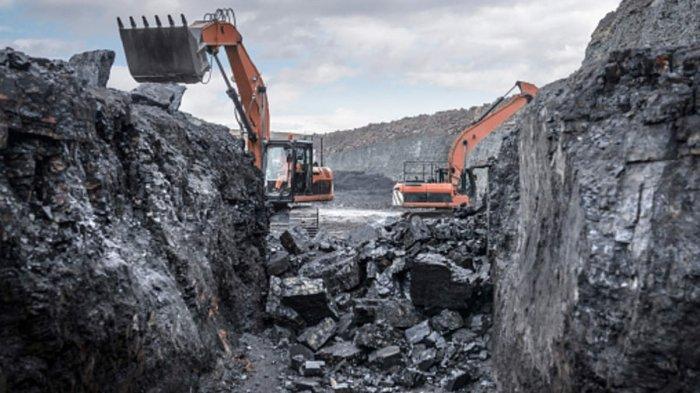The global coal market is once again in the spotlight after prices for the commodity climbed above USD 105 per ton, marking the highest level in a week. The coal price surge has drawn attention from analysts, policymakers, and energy producers alike, as it reflects deeper shifts in global supply and demand. With supply constraints, geopolitical tensions, and weather-related disruptions all playing a part, many are asking: is this just a short-term spike, or the beginning of another bullish cycle?
Supply Disruptions and Weather Impacts on Coal Availability
One of the primary drivers behind the current coal price surge is a series of supply-side disruptions affecting key producing countries. Heavy rainfall in coal mining regions of Indonesia and Australia has hampered extraction and transportation efforts, leading to delays and reduced export volumes. Indonesia, the world’s largest thermal coal exporter, has reported logistical constraints in its Kalimantan region, where coal is transported via river barges that have been affected by overflowing rivers.
In Australia, which supplies both thermal and metallurgical coal to markets like China, Japan, and India, weather conditions have similarly impacted production. The ripple effect is being felt across Asia, particularly in countries heavily reliant on coal for power generation.
The tighter supply has coincided with rising demand, especially as some regions enter their peak power usage seasons. This mismatch between demand and supply is a classic trigger for a coal price surge, and it's currently playing out in real time.
Rising Demand from Asia’s Power Sector
Asia’s growing energy demand is another major contributor to the coal price surge. Despite global efforts to transition to renewable energy, many countries in Asia still depend heavily on coal-fired power plants to meet their electricity needs.
India, for example, has increased its coal imports amid heatwave conditions and higher air conditioning use. According to India’s Ministry of Power, electricity demand recently touched a record 250 GW. With domestic production unable to keep up, the country turned to the global market, exerting additional pressure on coal prices.
Similarly, China has expanded its coal imports following reduced hydroelectric output caused by prolonged drought in key regions. While China continues investing in solar and wind, coal remains the backbone of its energy security strategy in the short term.
These trends signal that Asia’s energy demand will continue to fuel the coal price surge, especially in the absence of scalable alternatives to coal.
Geopolitical Tensions and Energy Policy Reactions
The coal price surge cannot be understood in isolation from global geopolitics. Tensions in Eastern Europe, ongoing supply chain issues, and a reshaping of energy alliances have all influenced the pricing dynamics.
The Russia-Ukraine conflict continues to disrupt global energy flows, leading many countries to secure alternative fuel sources. While natural gas markets were the initial focus, coal is now seeing increased attention as a backup resource. European countries, particularly Germany and Poland, have extended the lifespan of coal-fired plants to ensure energy security through winter.
In response, policymakers are taking both immediate and long-term steps. Several countries have begun reevaluating coal stockpiles and revisiting supply contracts with major exporters like Indonesia, South Africa, and Australia.
This geopolitical uncertainty is not just affecting spot prices — it’s also increasing long-term demand contracts, which strengthens the momentum behind the coal price surge.
Impact on Indonesian Coal Exports and the Domestic Market
Indonesia stands to benefit from the current coal price surge, particularly given its role as the top global coal exporter. With prices now above USD 105 per ton, Indonesian coal companies are experiencing stronger margins and higher export volumes, despite weather-related challenges.
The government, through its benchmark Harga Batubara Acuan (HBA), recently revised upward its pricing index, signaling stronger support for the sector. While this benefits miners, it also creates challenges domestically. Indonesia’s power utility PLN has to balance rising international prices with subsidized rates for domestic users, especially for electricity generation and industrial inputs.
In the short term, the windfall from exports may help bolster the country’s trade surplus and fiscal health. However, experts warn that over-reliance on coal may hamper Indonesia’s long-term energy transition goals.
Long-Term Outlook: Is This Surge Sustainable?
While the current coal price surge reflects immediate market dynamics, its sustainability remains uncertain. Analysts note that coal, despite its resilience, faces structural decline due to environmental concerns, decarbonization policies, and the rising competitiveness of renewables.
That said, coal is unlikely to disappear overnight. For many developing nations, it remains the most affordable and accessible source of energy. Until storage technology and grid infrastructure for renewables catch up, coal will continue to play a significant role in the energy mix.
Investors and policymakers must therefore navigate this transitional period carefully — capitalizing on current market opportunities while laying the groundwork for a lower-carbon future.
Strategic Implications of the Coal Price Surge
The ongoing coal price surge is a multi-dimensional phenomenon influenced by weather, demand, geopolitics, and policy. For exporters like Indonesia and Australia, the rising prices present economic opportunities. For importers in Asia and Europe, the surge poses budgetary challenges and necessitates strategic planning.
As the world attempts to balance energy security with environmental responsibility, coal remains at the center of that tension. This week’s pricing milestone — over USD 105 per ton — is not just a statistic. It’s a reflection of a world in energy transition, still grappling with the old even as it moves toward the new.
Read More






 Monday, 03-11-25
Monday, 03-11-25







